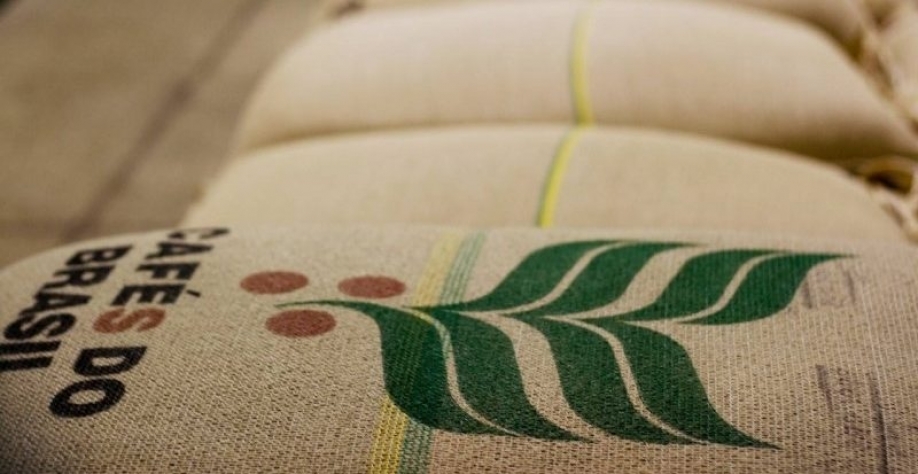RIO DE JANEIRO, BRAZIL – The 2021 Brazilian coffee crop was estimated on Tuesday at 48.8 million 60kg bags, close to the highest point of the January estimate of between 43.85 million and 49.58 million bags, according to state-owned National Food Supply Company (CONAB) in its second survey for the season.

Should the estimate be confirmed, harvest in the world’s largest coffee producer and exporter will drop 22.6% from last year’s record 63.08 million bags, as drought cuts production of arabica beans, the main variety produced in Brazil, which in 2021 is in the off-year of its biennial production cycle.
“The physiological impacts observed in several producing regions in this cycle, as well as the adverse weather conditions recorded in many locations, have directly influenced this outlook. This influence occurred both in the reduction of the average yield and in the decrease of the area in production,” CONAB said in its report.
Arabica coffee production was estimated at 33.365 million bags, against a previous estimate ranging from 29.7 million to 33 million bags. Should this estimate be confirmed, it will represent a 31.5% reduction compared to 2020.
The canephora coffee crop (robusta/conillon) is projected at 15.44 million bags, compared to a range of 14.13 million to 16.6 million bags in the last projection. Thus, in the annual comparison, production of this variety would increase by 7.9%, helping to mitigate the expected reduction in the arabica crop.
The total coffee production area in Brazil, including both arabica and canephora, was estimated at 1.82 million hectares, a 3.2% drop compared to 2020, according to CONAB.
With the harvest now underway, the initial estimate for the national average yield was 25 bags/hectare, down 25.4% compared to the previous harvest, pressured by the drop in arabica plantations.
CONAB recalled that in cycles of negative biennials for arabica, producers often conduct more intense cultural treatments in crops, promoting measures such as pruning, skeletonizing or harvesting, in areas that will only start production in the coming years – these activities also lower the harvest in the current cycle.
A larger area under development
If the area producing coffee is decreasing, the total area of coffee plantations under development is increasing by 41.4% compared to the previous cycle, to 392,000 hectares, which should boost the Brazilian harvest in the coming years, said the Ministry of Agriculture’s Marketing and Supply Department Director, Silvio Farnese, when commenting on the figures during an event broadcast over the internet.
“The larger area under development is an indication that we will have good coffee production in the future, considering new areas that have been renovated, with more refined technology and more productive varieties. When they start producing, we will have a good quality coffee crop,” stressed Farnese.
For the current harvest, the Ministry director highlighted that CONAB’s figure is very close to that of 2019 (49.3 million), the last year of low arabica production, despite concerns from the productive sector of a much larger than normal drop due to the prolonged drought in 2020.
In any event, he stressed that the projection signals that there will “in fact” be less coffee on the market, which will support prices.
Arabica coffee futures contracts in New York are trading near four-year highs, reflecting Brazil’s lower production. One hour after the release of the CONAB survey, prices on the ICE exchange were up 1% to US$1.506 a pound.
Although the drop in production in 2021 limits the availability of coffee for export in Brazil, the high exchange rate and attractive international prices should sustain the incentive for foreign sales, CONAB pointed out.
Another factor that may contribute to maintaining Brazilian exports at high levels is the prospect of a recovery in out-of-home coffee consumption as the control of the Covid-19 pandemic advances in many countries, said the state-run company.
States
CONAB estimates a 32.6% drop in production in Minas Gerais, Brazil’s largest producer, to 23.3 million bags.
“Harvest operations have already begun in some regions of the state, and the general outlook is for a decrease in the allocation of production area in this cycle, in addition to a decrease in the average crop yield, both due to the impacts of the negative biennial as well as the scarcity and irregularity of rainfall during crop development,” CONAB said of the largest producer of arabica coffee.
In Espírito Santo, the leading producer of conillon coffee, the estimated total production (including arabica) is 13.63 million bags, a yearly decrease of 2.4%.
Espírito Santo is expected to produce 3.2 million bags of arabica coffee (compared to 4.8 million in 2020) and over 10 million bags of conillon, an increase of about 1 million bags year-on-year.
São Paulo, the third largest coffee producer in Brazil, is expected to produce 4 million bags, a 35% reduction compared to the 2020 result.

